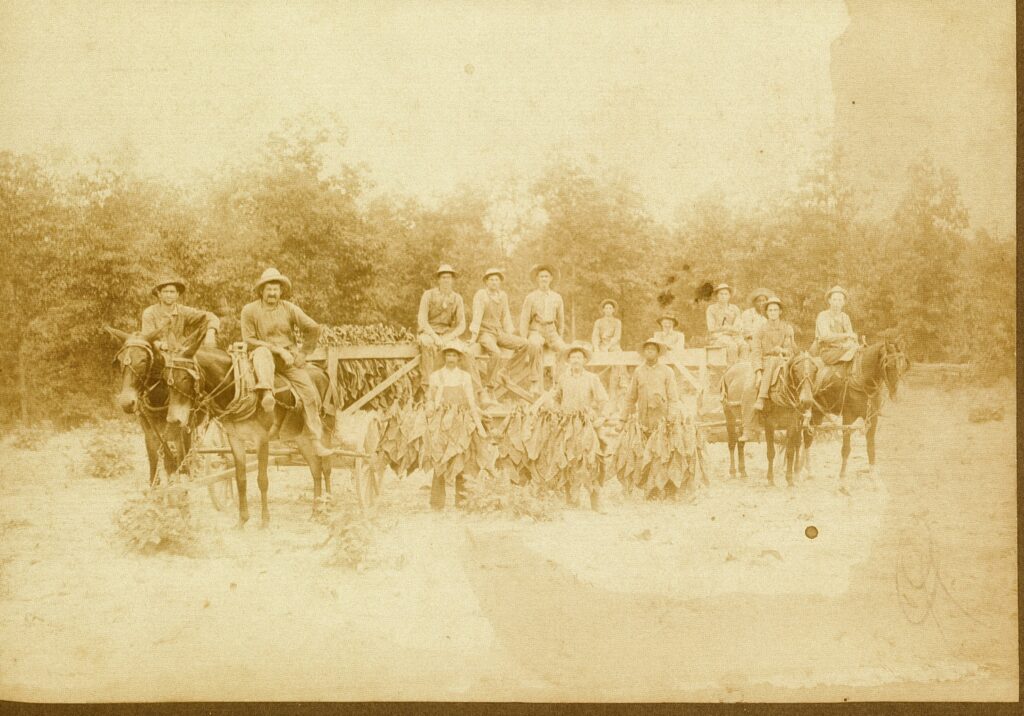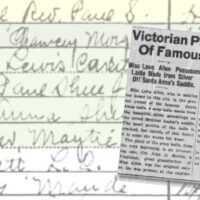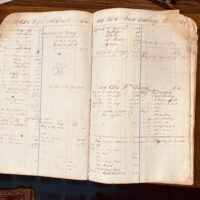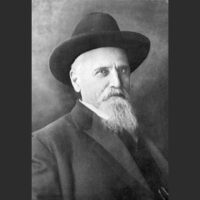It’s the end of a long, hard day. A group of men pause their work for a minute to pose with their spoils: dark tobacco spiked on sticks, ready to hang in the barn. Three men hold a loaded stick in each hand while the others look forward. It seems unusual for them to stop for a photograph, but nonetheless, the photographer releases the shutter and …
CLICK!
A familiar moment is captured.

“Tobacco is a job that will keep you busy 13 months of the year.”
– Richard Ivan Cooksey (Richard King’s grandfather)
This photograph captures one of the oldest traditions in our county: growing tobacco. Since the earliest days of white settlement in Christian County, tobacco and tobacco farming have been deeply rooted in our culture. Early settlers moving west from Virginia and North Carolina knew how to grow tobacco and found suitable conditions to grow it here. Not just suitable; perfect. And not just tobacco; dark fire-cured tobacco. It has a distinctly darker leaf, but its most distinguishing quality is how it is cured. After being cut, the tobacco is hung in barns where low, smoldering fires built in sawdust burn.
This process, both an art and a science, stretches back over acres and through generations. It brought great wealth and great conflict to our area, and it is one of the most universal experiences for those who have called Christian County home.
A moment in the tobacco patch
This month’s photograph transports us back to about 1910 (give or take) and to one of the most pervasive scenes in this area: a tobacco patch. This picture hangs in the “Farming in the Black Patch” exhibit at the Pennyroyal Area Museum, and it inspired a section on the banner that greets museum visitors. It seems that this picture has been used in the museum for a while, but I never knew much about it. That is, until Richard King came into the museum one day. He had with him a small stack of old family photographs that he thought might be of interest. And boy, was he right! Not only did he have an original copy of this picture, but he could also identify more than half of the men in it.

A few things strike me about this picture. First, that it even exists. The photographer is unknown, but he could have been traveling through the area. Perhaps a man with a big box camera noticed this crew hauling in a wagon full of tobacco, and he took the time to interrupt their work long enough to capture it. It is such a familiar scene — so familiar that it isn’t often photographed.
I will never claim to be a tobacco expert. Over the past decade, I have learned enough to describe the process and use the correct terminology. From setting to topping to spiking and firing and stripping — the language of the tobacco patch fascinates me. But that is about the extent of my working knowledge. Admittedly, I have never worked as hard as a farmer. Not a day in my life.
But I’m getting ahead of myself.
Another thing that strikes me is the number of men in the picture. Fourteen of them, representing various ages and races, but something about them leads me to believe they have more similarities than differences. They are all dressed alike, including some impressive work hats, and they look as though they have worked together to get the massive chore of cutting tobacco done for the day.
Community connection
This photograph was passed down through Richard’s family. The man who owned the farm and who is standing front and center is their kin. On the back of the original, his grandmother (or maybe his mother) jotted down the names of the men she knew. They are (back row, from right) unknown, Silas Davis, Ephraim Groves, Ethyl Cook, John Cannon, unknown, Allen, unknown, unknown; (front row, from right) Arron Jago, Joe Waters, Jack Jago, unknown, Claude Cannon.
The picture was taken just north of the Fruit Hill area of Christian County on the farm of Joe Waters. According to census records, it was likely taken between 1910 and 1920. I came to this conclusion because in each of those two census years, the men listed in this picture all owned farms extremely close to each other.
That’s the way the census worked. The enumerator traveled door-to-door to record who lived in each household. Not only does the census give us vital information about individuals, but it also gives us information about neighbors. And neighbors were essential for the tobacco farmer.
Growing tobacco was hard. It was — and still is! — one of the most labor-intensive crops. In Waters’ day, every bit of the process was done by hand, and it required a lot of hands. Large families did the work, and prior to the Civil War, the work was frequently done by enslaved people.
Getting tobacco out of the field sometimes meant relying on neighbors for a helping hand — and then returning the favor.
“You bring your boys over here today to help me cut, and I’ll bring mine over to your place tomorrow to help you.” That’s how Richard described it to me — as if an understanding existed that the only way to be successful was to participate in the give-and-take of this process.
What happened to these men? I researched each one for whom I had a name. With only one exception, they all owned and worked farms in the same area for much of their lives. At least one participated in another business known to be lucrative in these parts, and he was charged with violating national prohibition on one occasion and unlawfully operating a 60-gallon still on another. Most of them passed away in the early 1950s, and at least four are buried at Judge’s Chapel Baptist Church Cemetery up in Fruit Hill.
This unlikely picture of a very likely scene tells a story of agriculture and of the cash crop that has been grown here since our earliest days. But it also tells a story of neighbors helping neighbors and of a community supporting each other. Taken just on the heels of the Tobacco Wars and Night Rider movement that swept the area from 1904 until about 1911, this picture shows that a sense of helpfulness and support survived, out of necessity if nothing else. These men took time from their own farms and their own families to assist a neighbor. I feel certain that the favor was returned.
To me, the scent of Christian County is the aroma of the smoke rolling out of a dark-fired tobacco barn. I look forward to it every year, and I missed it when I lived far away. Richard has promised to take me on a field trip to see the area where this picture was taken and the cemeteries where a few of these men are buried. If we get our timing right, we will do it while tobacco is being fired.
And, with this picture in mind, we will breathe in the smell of the seasons changing, of a profitable livelihood, of so many hours of work, of countless hands over decades and centuries, and of our communal history.





